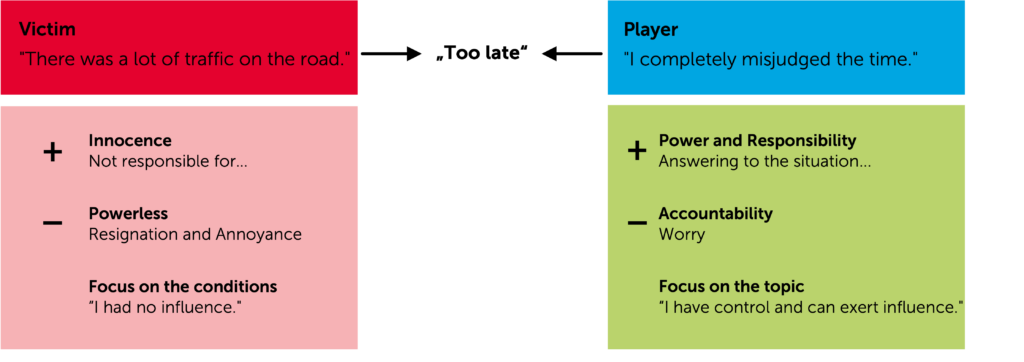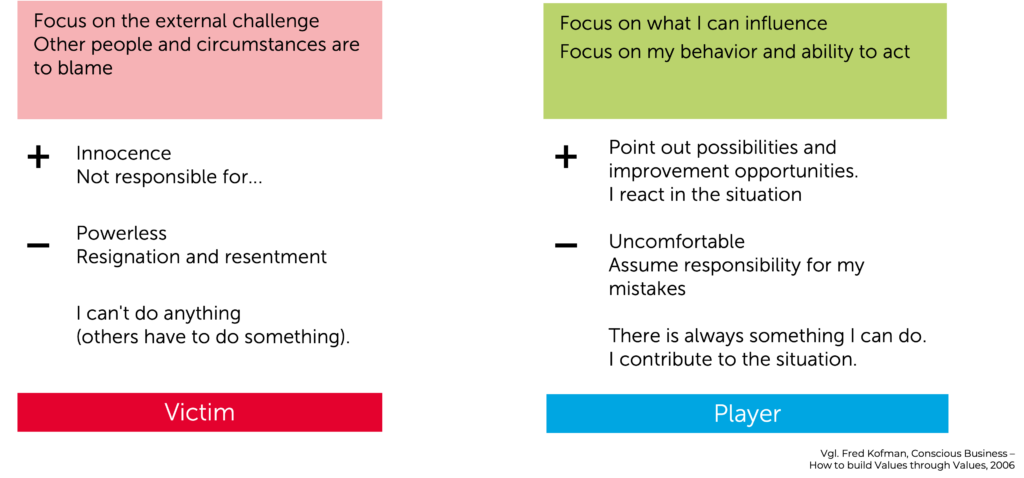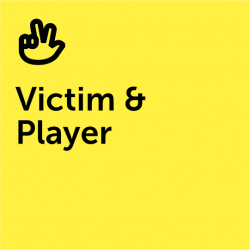Step-by-step Intructions
An inner “victim mindset” means looking externally for reasons why something didn’t work out. For example, getting to work on time. One refers, for example, to the heavy traffic. Thus, one is not to blame. This feels pretty good in the first moment. But it also means that you can’t change anything. In a “responsible” attitude you check what your own part in it is and therefore you have the possibility to change something. In this example, you listen to the traffic radio in the morning and can better estimate the travel time.

Round 1:
“Meet in pairs. Person A thinks about a situation that is or was very annoying for him/her. This can be about conflicts with colleagues, bad projects, unpleasant bosses etc.
You may also describe your situation anonymously. Person B, tries to keep him/her in a “victim attitude” with the questions listed below. It is not about finding a solution for the situation. Then you reflect on how it felt to be consciously in the “victim position”.
Questions, that support a victim attitude:
- What has happened to you?
- Who put you in this situation?
- What did s/he do to you?
- How can you take revenge?
- What would you have thought of this person?
- What punishment should s/he receive?
Round 2:
“The same pairs. Person A tells about the same annoying situation. Now person B goes into a “supportive/solution-oriented” question and tries to get person A into another position – into a creative role. He/she uses the questions listed below.
Questions, that support a player attitude.
- What was/is your specific challenge?
- How did you respond?
- What did work well?
- What would you do differently next time?
- What was/is your part in the situation?
- What did you learn from it?
Afterwards, reflect with the participants which feelings arose in the different situations and which learnings they will take away.
Conclusion:
Each of us occasionally likes to adopt the victim attitude. It is only important to recognize when you are in which posture and to be able to consciously change it. Especially in the role of a facilitator it is helpful to recognize which posture you and also the participants are currently in and how you can support them to change into a “designer” posture if necessary. Those who cannot see their part in the problem cannot be part of the solution.
Effective Thinking Patterns

Reference
Exercise developed by Fred Kofman in his book:
Fred Kofman: Conscious Business: How to Build Value Through Values. Sounds True Inc.: Louisville 2006
RELATED METHODS
Superpower MirrorLeadingsda
Avatar and Super Power





